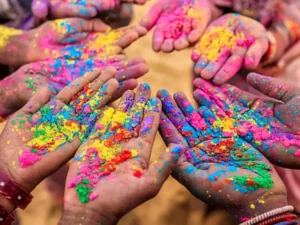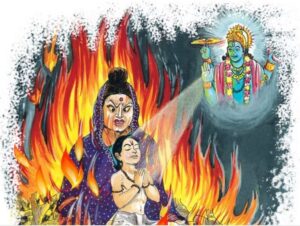Holi 2023: Here’s Why People Wear White Clothes On The Festival Of Holi


Source : Times Of India
Holi, also known as the “Festival of Colors”, is one of the most vibrant and joyous festivals celebrated in India. It falls on the full moon day in the Hindu month of Phalguna, which usually corresponds to late February or early March. This year, Holi falls on March 8, and people are gearing up for the festivities. One of the most striking aspects of Holi is the tradition of wearing white clothes while playing with colors. Let’s explore the significance of this tradition.
There are many reasons why people wear white clothes on the festival of Holi. First and foremost, the various colors used to play Holi, including green, red, yellow, pink, orange, violet, blue, and more, and out vividly on white clothes. This creates a stunning visual effect that adds to the festive atmosphere. The contrast between the bright colors and the pristine white backdrop makes for some stunning photographs.
Another reason for wearing white is that Holi marks the advent of the summer season in India. With temperatures soaring, people prefer to wear lighter and more breathable fabrics. White is an excellent choice in this regard, as it reflects sunlight and helps keep the body cool.

Source: AglaSem Schools
But the significance of wearing white on Holi goes deeper than just practical considerations. In Hindu mythology, white is a symbol of truth, purity, and peace. Hindus believe that Holi and Holika Dahan, which is celebrated a day before Holi, are celebrations of the victory of good over evil and brotherhood. The stories of demon king Hiranyakashipu, his son Prahlada, his sister Holika, and Lord Vishnu’s avatar Narasimha are closely linked to the festival of Holi.
According to legend, Hiranyakashipu was a powerful demon who had been blessed with the boon that no man or animal could kill him. He forced people to worship him and wanted his son Prahlada to do the same. But Prahlada was a devotee of Lord Vishnu and refused to obey his father’s orders. This infuriated Hiranyakashipu, who decided to get rid of Prahlada by any means necessary.
Hiranyakashipu’s sister, Holika, had been blessed with the boon that she could not be harmed by fire. So, Hiranyakashipu asked Holika to take Prahlada on her lap and sit in a bonfire, hoping that Prahlada would be burned alive. But as the fire roared, something miraculous happened. Holika’s protective cloak, which was meant to shield her from fire, flew off and covered Prahlada instead. As a result, Prahlada emerged unscathed, while Holika was burned to ashes.

Source: News18
This incident is commemorated on the night before Holi, when people light bonfires and burn effigies of Holika to symbolize the victory of good over evil. On the day of Holi, people play with colors, sing and dance, and forget all their differences. They embrace each other with love and forgiveness and celebrate the bonds of brotherhood and friendship.
Wearing white on Holi signifies these sentiments of purity, goodness, peace, and harmony. It is a way of honoring the victory of good over evil and celebrating the triumph of truth over falsehood. It is a way of expressing solidarity with all those who stand for what is right and just in the world. And it is a way of reminding ourselves that no matter how many colors life throws at us, we can always stay true to our inner selves and emerge stronger and more resilient.

Source: NDTV Food
In conclusion, the tradition of wearing white on Holi carries deep cultural and spiritual significance. It symbolizes purity, truth, and peace—values that are central to Hindu mythology and the festival itself. By wearing white, people not only enhance the visual impact of the colorful festivities but also honor the triumph of good over evil and the spirit of brotherhood and forgiveness. As Holi approaches, let us embrace the joy and positivity of this festival and celebrate the colors of life with open hearts and minds.
Source: Hindustan Times